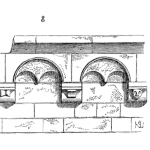
Guest Post by Bill Pomfret (first posted on CERM ® RISK INSIGHTS – reposted here with permission)
Just how safe is “safe”? Should working in a chemical plant have the same level of risk as skydiving (which kills about 40 people per year in the U.S.A Should working in a plant be as safe as driving your car? Or should it be as safe as flying in a plane, which is safer than driving a car by two orders of magnitude?
While the term FAR may be simple to understand and may represent a useful yardstick, many companies, especially in the U.S., are unwilling to put such targets in writing. Imagine walking into company XYZ’s plush world headquarters office and on the wall in the reception area is a sign that reads, “We at XYZ consider it tolerable to kill 4 people per 100-million-man hours.” The lawyers would have a field day! However, as we shall see, some organizations have established such quantified risk targets.
[Read more…]









